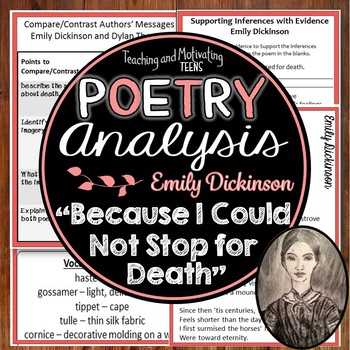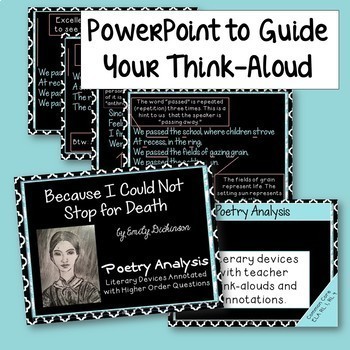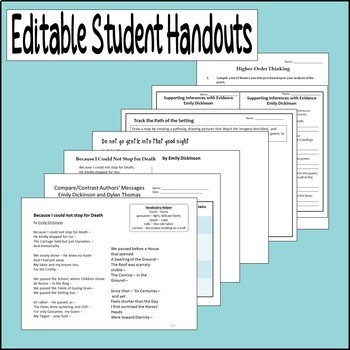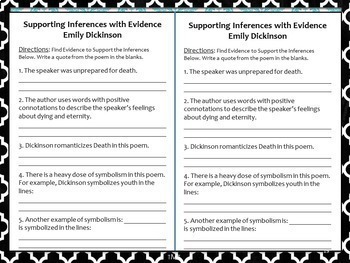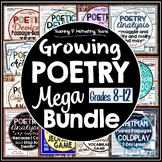Emily Dickinson "Because I Could Not Stop for Death" Close Reading + Think Aloud
- Zip
Also included in
- Your students will love this huge, editable collection of fun, differentiated, and challenging poetry lessons. They'll particularly enjoy the games and activities, while you'll love the standards-based, rigorous, and engaging resources. Also includes an end-of-unit test. This is my largest poetry buPrice $22.00Original Price $29.50Save $7.50
- Welcome to a huge bundle of great lessons and teaching resources that will give you a firm foundation for your lesson planning. Engaging lessons you'll love to teach, and your students will love to learn!I've been asked to create a larger bundle - and here it is! With this huge resource, you'll havePrice $145.96Original Price $162.18Save $16.22
- Character Archetypes LessonElements of Fiction PowerPoint and Guided NotesTone ELA LessonInformational Text Lesson Drop Out FactsPoetry Anayliss Because I Could Not Stop For DeathLiterary Genres Role Play25% savings = 5.75 (let's call it $6)Price $17.00Original Price $23.00Save $6.00
Description
Immerse your students in a close read of this classic, beautiful poem. You'll get task cards/mini-posters, PowerPoint featuring "think aloud" notations, response sheets, and more!
➜This resource is available at a reduced price as part of my Poetry Mega-Bundle for Middle and High School. Check it out!
You'll get a PowerPoint close-reading to accompany your think aloud. It includes the poem, annotations, and an original hand drawing of Emily. Also sixteen quotes by Emily Dickinson to use as task cards or mini posters. There is a blank template page to add quotes of your choice. You'll also have student handouts for their annotations - and with questions for them to think about.
The PowerPoint think aloud analyzes the literary devices used (e.g., personification, imagery, symbolism, etc.) along with teacher annotations which appear as custom animations (arrows pointing, timely reveal of important information). The presentation is versatile inasmuch as students can view independently after their own analysis, it can be used for test review, or the teacher can lead post-reading discussion while running it. Higher-level questions, text-to-text comparison. Printable copy of poem at end of the presentation.
Text-to-text connections with Dylan Thomas' "Do Not Go Gentle into that Good Night."
Includes sketch of Emily Dickinson. If you choose to use this sketch for commercial use, please site credit to Mira-Francine Originals with a link back to this page. Thank you!
Be sure and check out some of my other products! Just click on the handy links provided below. :-D
Categorized List of Products for You and Your Students to Love:
Summary, Main Idea, Paraphrasing
1. Differentiated & Fun Lesson in Summarization Skills
Lessons with Song Lyrics
1. My Life Symbolized by Song Titles
2. Coldplay's "Violet Hill" Song Lyric Analysis Lesson
Poetry
1. Poetry Unit Test - Summative Assessment with Passages
2. E.E. Cummings Poem "maggie and milly and molly and may
Writing

